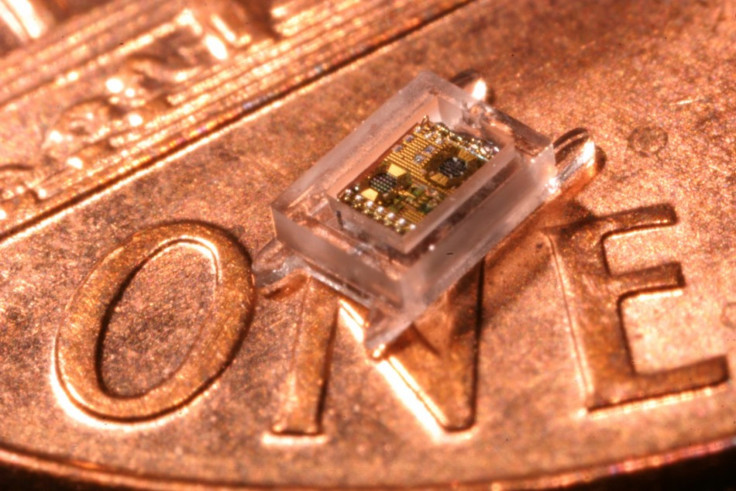World’s smallest computer unveiled by researchers at University of Michigan

A new millimeter-scale computing system that can hold up to a week's worth of information has been created by researchers at the University of Michigan and is being hailed across the world as the smallest computer ever. Primarily targeted at medical applications, it might one day be used to track pollution, monitor structural integrity, perform surveillance, or make virtually any object smart and trackable, according to a release from the University.
Professors Dennis Sylvester and David Blaauw from the Department of Electrical Engineering and Computer Science at U-Michigan came up with the miniscule system in the course of research focused on building a prototype implantable eye pressure monitor for glaucoma patients to potentially track the progress of the disease.
The mini-computer, just over one cubic millimeter - roughly the size of an N on the back of a penny - is in fact housed within the medical device, and contains an ultra low-power microprocessor, a pressure sensor, memory, a thin-film battery, a solar cell and a wireless radio with an antenna that can transmit data to an external reader device that would be held near the eye. It represents the third generation of a processor created by the researchers, known as Phoenix chip, which uses a unique power gating architecture and an extreme sleep mode to achieve ultra-low power consumption.
This means that the newest system powers on briefly every 15 minutes to take measurements, consuming an average of 5.3 nanowatts each time. The battery requires exposure to 10 hours of indoor light each day or 1.5 hours of sunlight to remain charged.
Sylvester pointed to the uniqueness of the project, saying that we're thinking about complete systems in which all the components are low-power and fit on the chip. We can collect data, store it and transmit it. The applications for systems of this size are endless.
Millimeter scale systems are largely considered to be the next big thing in computing which will make it ubiquitous; When you get smaller than hand-held devices, you turn to these monitoring devices, Blaauw said. The next big challenge is to achieve millimeter-scale systems, which have a host of new applications for monitoring our bodies, our environment and our buildings.
© Copyright IBTimes 2024. All rights reserved.





















